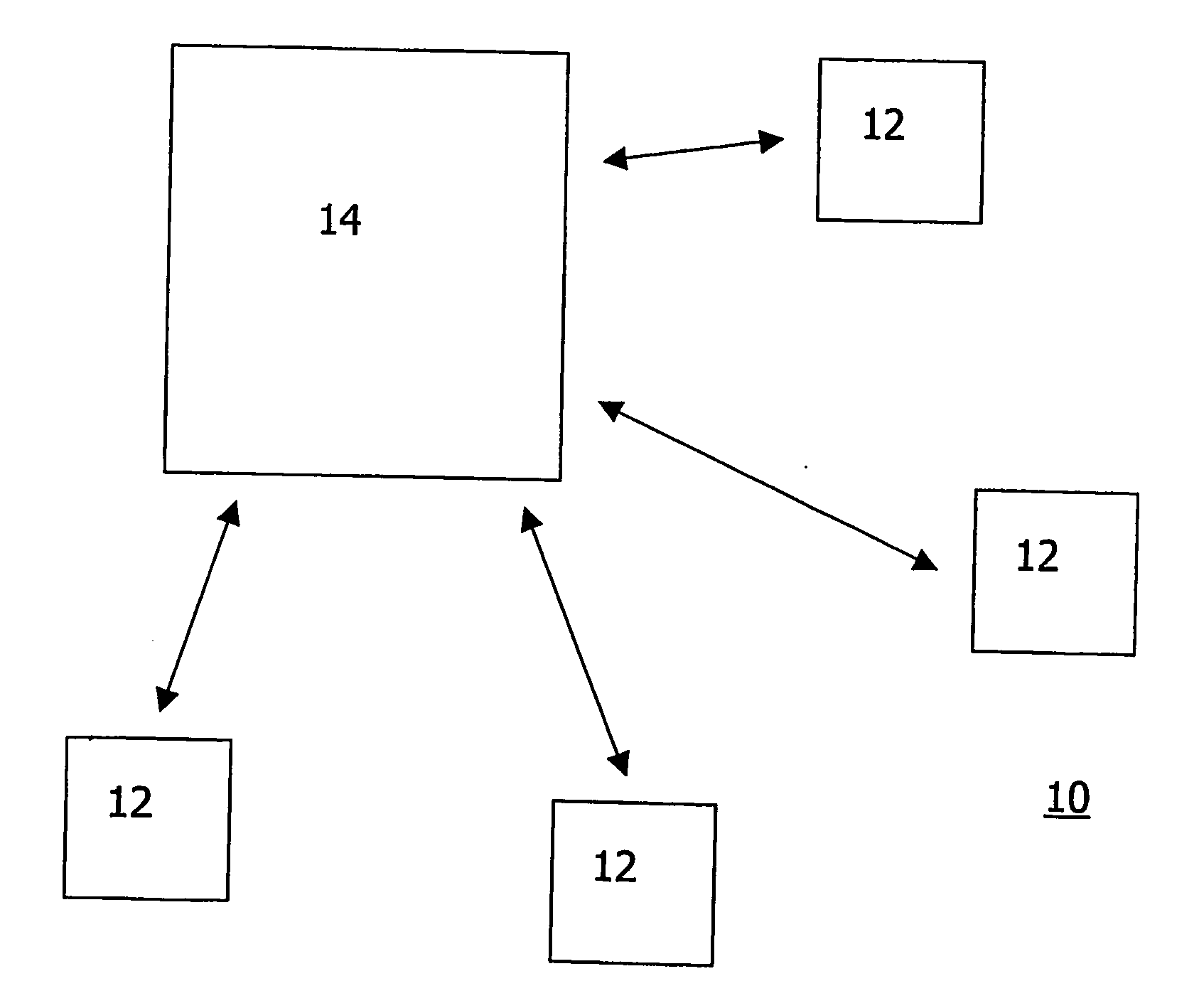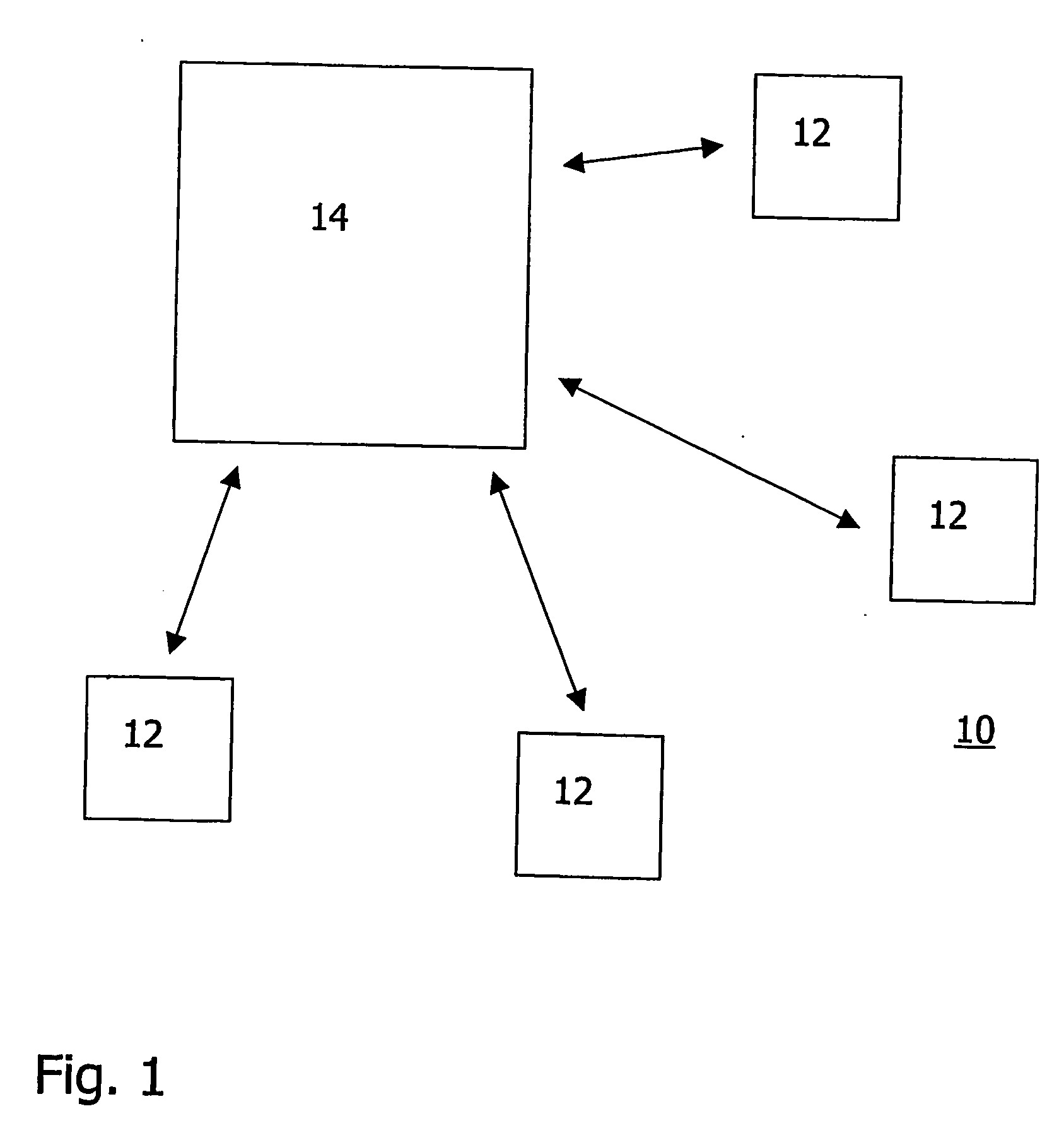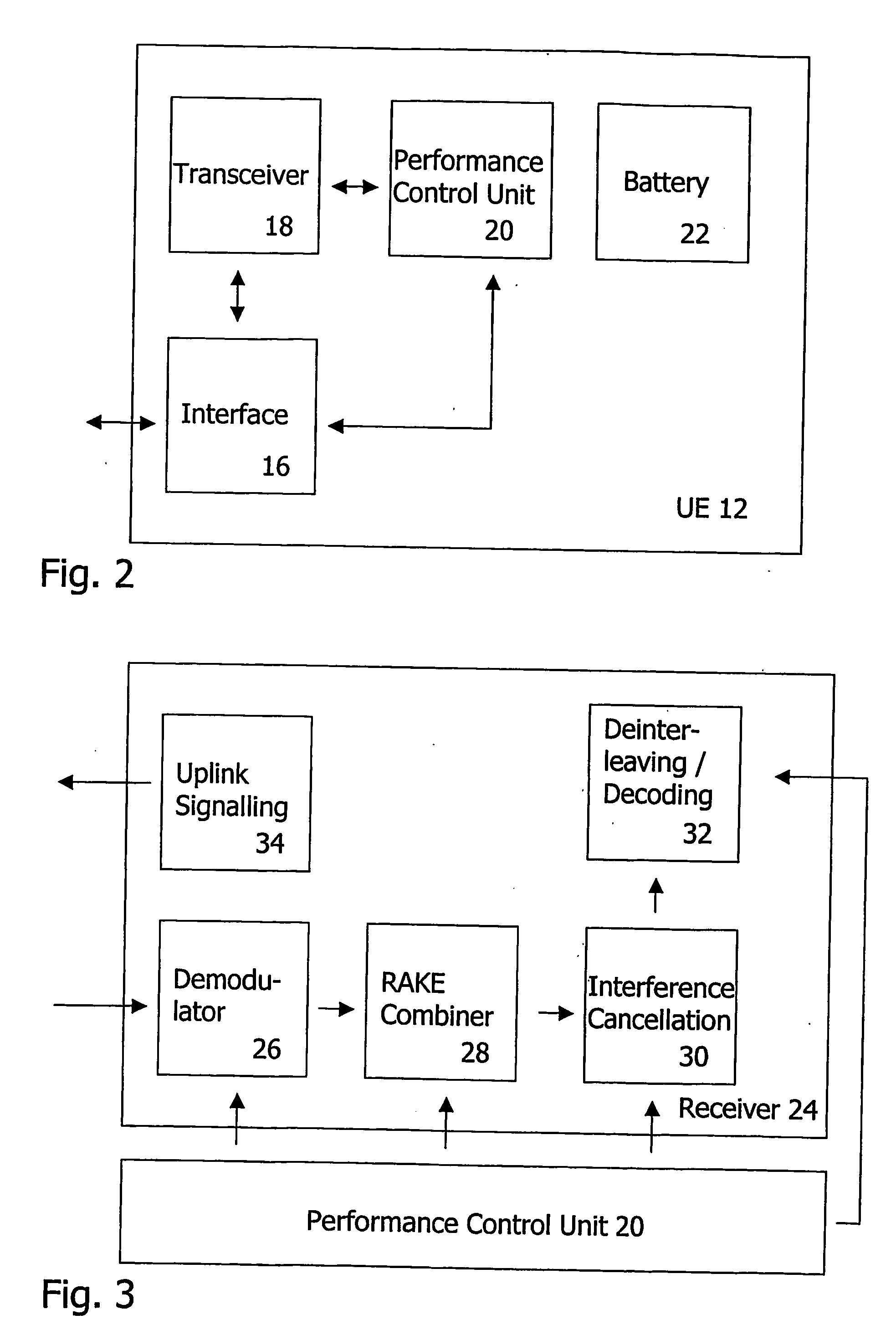Receiver performance control
a technology of performance control and receiver, applied in the field of wireless communication networks, to achieve the effect of quickness
- Summary
- Abstract
- Description
- Claims
- Application Information
AI Technical Summary
Benefits of technology
Problems solved by technology
Method used
Image
Examples
first embodiment
[0047] the BS 14 determines in a first step a particular network condition that can be influenced by means of a control of the advanced receiver structures 26, 28, 30, 32 of the UE 12. The network condition may be load of an individual cell serviced by the BS 14, in particular when there is a capacity problem in the cell.
[0048] The BS 14 has several possibilities to determine the load of a particular cell. In general, the cell load can easily be determined based on information that is anyway available at the BS 14.
[0049] One way to determine the cell load is admission control. Information obtained during admission control includes the total number of UEs serviced by the BS 14. A large number of UEs indicates that there might be a capacity problem.
[0050] A further parameter indicative of the cell load is the current transmit power of the BS 14. An indication of the cell load can for example be obtained by comparing the current transmit power with the maximum transmit power of the ...
second embodiment
[0065] According to the invention, the UE 12 has an internal mechanism (not depicted in FIG. 2) for determining the cell load, the interference level or any other parameter indicative of a network condition. Like at the BS 14, such a parameter can be readily available so that in most cases no further hardware or software is needed for this purpose.
[0066] One possibility to determine the cell load within the UE 12 is to assess the reaction of the network to power control information that is sent uplink by the uplink signalling unit 34 depicted in FIG. 3. If for example the BS 14 does not increase its transmit power towards to UE 12 in response to one or more corresponding requests on uplink, the UE 12 can conclude that the cell load is high.
[0067] Once the cell load has been determined, the performance control unit 20 of the UE 12 decides whether or not one of the available advanced receiver structures 26, 28, 30, 32 shown in FIG. 3 are to change their state. If required, the perfor...
PUM
 Login to View More
Login to View More Abstract
Description
Claims
Application Information
 Login to View More
Login to View More - R&D
- Intellectual Property
- Life Sciences
- Materials
- Tech Scout
- Unparalleled Data Quality
- Higher Quality Content
- 60% Fewer Hallucinations
Browse by: Latest US Patents, China's latest patents, Technical Efficacy Thesaurus, Application Domain, Technology Topic, Popular Technical Reports.
© 2025 PatSnap. All rights reserved.Legal|Privacy policy|Modern Slavery Act Transparency Statement|Sitemap|About US| Contact US: help@patsnap.com



